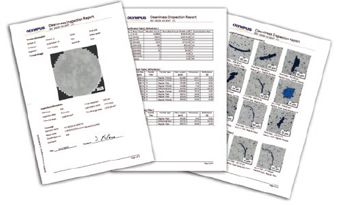Component cleanliness is an integral part of industrial manufacturing processes
The cleanliness of components and parts is at the center of most industrial manufacturing processes, as these components must be free of contaminants to help ensure a high-quality finished product. Technical cleanliness inspection involves quality control, process management, and manufacturing departments taking samples from the production line and utilizing particle extraction through filter membranes to quantify contaminants that may impact the performance, lifetime, and reliability of final products.
What are the basics of technical cleanliness?
The growing complexity of today's technical products, especially within the aerospace, automotive, heavy equipment, and electrical engineering industries, has resulted in an increasingly high demand for product reliability and quality assurance. The durability and lifecycle of a finished product depend on a number of characteristics, all of which contribute to its measurable technical cleanliness:
- Quality and characteristics of the product material
- Fitting tolerances
- Overall cleanliness of a surface or particle load
How does technical cleanliness affect a product's reliability?
 Product contamination, which usually occurs during manufacturing but can also be the result of storage, cleaning, or handling, has a direct influence on a finished product's reliability and its lifespan. The dangers of unclean surfaces or production liquids can range from function loss to product failure to complete
breakdown.
Product contamination, which usually occurs during manufacturing but can also be the result of storage, cleaning, or handling, has a direct influence on a finished product's reliability and its lifespan. The dangers of unclean surfaces or production liquids can range from function loss to product failure to complete
breakdown.
Residues on the surface of technical devices used in manufacturing and assembly processes can cause unreliable and/or poor device performance, downtime in production, or the waste of materials and energy. Large residue particles (sometimes called "killer particles") may cause complete function loss. With the ever-decreasing size of system components, smaller residue particles can also cause catastrophic failures and lead to the breakdown of an entire end product.
In what application areas is technical cleanliness most important?
The cleanliness of components and parts is critical to the manufacturing process. Here are a few basic illustrations of the importance of technical cleanliness in relation to specific industries:
- Heavy Machinery: Because the very large parts that make up a lot of heavy machinery can be difficult to reach and directly inspect, the inspection of these products can become very costly. Therefore, it is more cost- and time-effective to inspect used oil for particles rather than inspect the machine itself. The status of the oil is an accurate indication of the condition of a machine.
- Electrical Engineering: If there are particles on an interconnect during the production process, that is an indication that they have not been properly built. The detection of these particles, and subsequent eradication, is a good way to avoid short circuits on printed circuit boards (PCBs).
- Automotive: Within the automotive industry, there are many intricate systems and parts that need to be free from contaminants. These may include ABS systems, fuel injectors, brake calipers, and hydraulic fluid systems.
What is the technical cleanliness inspection process?
Proper technical cleanliness inspection is based on a clear, established process that utilizes particle extraction on membrane filters to quantify contaminants that directly affect the performance, lifetime, and reliability of finished products. Particles are taken from sample components via flood, squirt, rinse, or ultrasonic bath and then collected on a membrane filter. Once the filter is dried, it is then inspected using a multi-step inspection process that is used to identify and analyze the contaminants in question. The contaminants are analyzed in accordance with international standards such as ISO 16232 (VDA 19.1) and ISO 4407.
What kind of system is required to conduct technical cleanliness inspection?
 Technical cleanliness inspection presents a number of unique challenges, including the need to regularly check results during inspection, view multiple particles simultaneously, revise results based on various standards, and quickly circulate results. Designed specifically to address these challenges, the
OLYMPUS CIX100 technical cleanliness inspection system is a dedicated, turnkey solution for manufacturers that need to maintain high quality standards regarding the cleanliness of manufactured components.
Technical cleanliness inspection presents a number of unique challenges, including the need to regularly check results during inspection, view multiple particles simultaneously, revise results based on various standards, and quickly circulate results. Designed specifically to address these challenges, the
OLYMPUS CIX100 technical cleanliness inspection system is a dedicated, turnkey solution for manufacturers that need to maintain high quality standards regarding the cleanliness of manufactured components.
The OLYMPUS CIX100 system makes it easy to quickly acquire, process, and document technical cleanliness inspection data. The system is intuitively designed to guide users through each step of the process so that even novice inspectors can acquire important cleanliness data quickly and easily. High-end optical components; seamless integration of hardware and software; and a robust, low-maintenance design help ensure reproducible imaging conditions and make cleanliness inspection a routine task.




